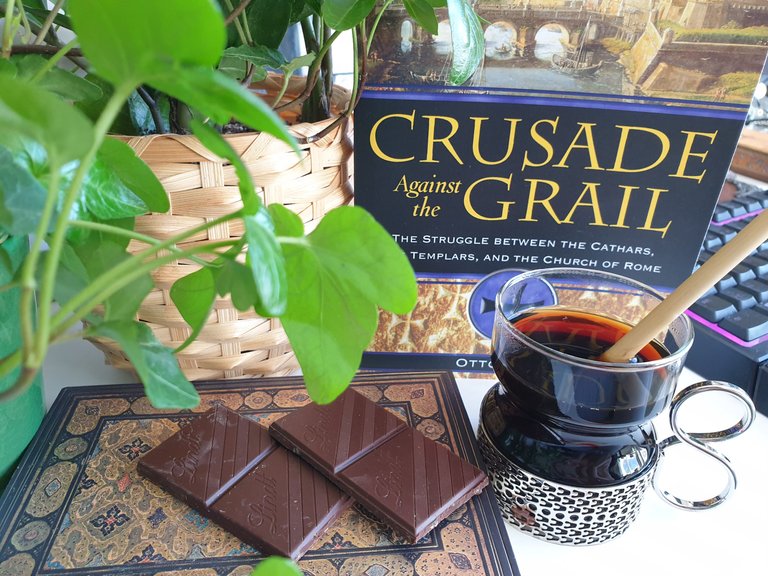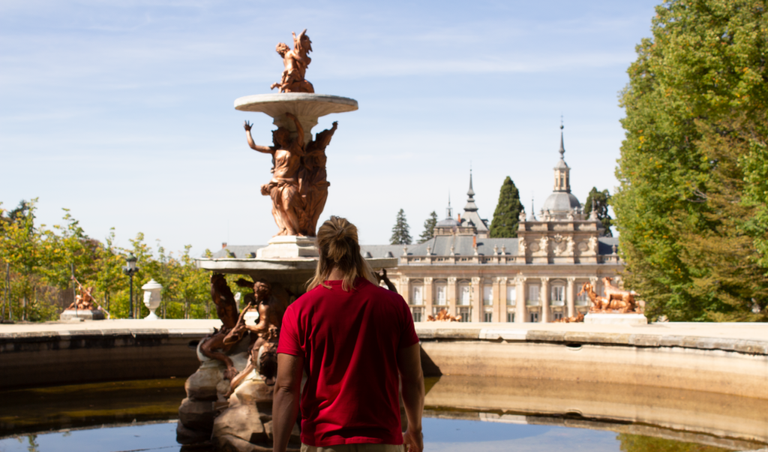
I have read Crusade Against the Grail by Otto Rahn. It was first published in 1933 as Kreuzzug gegen den Gral. Since I already read Rahn's second book, Lucifer's Court (review here, I recommend you to read that first), I thought it was reasonable to read his first book as well.
Just as I noted in my review of Lucifer's Court, Crusade Against the Grail should not necessarily be read as a historically accurate description of the cultures and events of Southern France during the Middle Ages. That being said, the book is beautifully written. Even translated into English and read almost a century after its release, it still evokes appealing images of the sun-drenched Occitan country-side.
An interesting fact is the following: after releasing Crusade Against the Grail, Rahn was offered 1000 Reichsmark per month by Heinrich Himmler to write a sequel. This is interesting because of the way Rahn portrays the Cathars. Rahn juxtaposes the Occitan (Cathar) religious tolerance against the intolerance and brutality of the Catholic Church. As noted in my previous article, Rahn eventually grew disillusioned by what he saw as an increased intolerance in Germany. It is clear that he greatly valued the tolerant attitudes of the Cathars.
The God Amor
In my review of Lucifer's Court, and in a recent Fizeek Friday post, I included an inspiring quote describing a god. That god appears in a passage here as well:
An elegant and strong knight approached on horseback. Blond hair fell on his bronzed face, and his clear eyes glistened. The smile of his mouth revealed mother-of-pearl teeth. [...]
"Piere Vidal," said the knight, "you should know that I am Amor, and my Lady is called Grace. Her lady-in-waiting and my servant are Modesty and Loyalty."
In Lucifer's Court, this god is Lucifer himself, and Loyalty is his paladin. Since having a paladin named Loyalty is more epic than having a servant, I will keep the Lucifer's Court version in mind. Peire Vidal was a renowned Occitan troubadour and poet.
A Golden Renaissance
In the Translator's Foreword chapter of the book, Christopher Jones points out that Rahn yearned for a golden renaissance of traditional values based on the unity of France and Germany under neo-Cathar beliefs. I, Marcus, also yearn for a golden renaissance and a closer unity between France and Germany. And, as I discussed in Podcast Episode 7. Europa, a closer unity between all European countries. In contrast to Rahn, however, I am not a proponent of Catharism.
The Pure Ones
The Cathar Pure Ones promised to dedicate themselves to God and His Gospel, never to lie, never to take an oath, never to have any contact with a woman, never to kill an animal, never to eat any meat, and to feed themselves only with fruits. In fact, during the twelfth and thirteenth centuries any Christian that abstained from meat was suspected of Cathar heresy.
Even if Rahn succeeds in presenting the Cathars in a favourable light, it becomes clear that their teachings are not to be recommended.
- For optimal health and happiness, eating meat is good. Meat is a superfood.
- Being intimate with your wife is good. That being said, it is recommended to practice semen retention (more on that in a coming article, video or podcast).
- Although fruits are delicious and are beneficial to eat prior to prayers in the Temple of Iron, your diet should be centred around meats, eggs and dairy. Fruits can be seen as a complement to your diet.
Moreover, the Cathars viewed the celestial Minne as the original love, and that it had nothing to do with the Earthly love that procreates human beings. Another aspect of Cathar belief was the longing for the next life, and the view of this world as Hell. Both of these attitudes go against the original European Pagan life-affirming attitude to intimacy and the world.
The Pathway of the Pure Ones
The Pathway of the Pure Ones starts out from Olmés, borders Montségur, and passes over the summit of the Tabor. Finally, it reaches the caves of Sabarthés, the last home of the Cathars. Once there, so far from the world, they meditated upon the supreme Minne in a trance-like state.
That sounds like an excellent travel destination for any esoterically minded modern knight. Minne (not to be confused with the Scandinavian word for memory) is another word for the notion of Medieval courtly love. Minne, like chivalry, was a large part of the troubadour culture.
The Crusade Against the Cathars
It must be stated that the crusades against the Cathars were, in no uncertain terms, a horrific affair, as was the persecution of the Cathars. There is a satisfying passage in the book, where Rahn retells the story of how a group of Occitan knights ambushed and killed a group of inquisitors.
The title of the book itself, The Crusade Against the Grail, refers to the grail as a sacred symbol of the Cathars. Rahn also believed that the Cathars hid the grail in the mountains of Southern France during the crusade. He believed that he could find the grail by using Wolfram von Eschenbach's Parzival as a guide, just as German archaeologist Heinrich Schliemann had located ancient Troy using the Iliad. Rahn's search for the grail is a main theme of Lucifer's Court.
On a somewhat related note, when reading about the brutality of the Albigensian Crusade (Cathar Crusade), it becomes easier to understand that the Bosnian Bogomils (another Christian heresy) were inclined to convert to Islam to gain the protection of the powerful Ottomans against the Catholic Church. That being said, today's Bosnia would be better served by renouncing Islam in favour of another religion. It is the only way they can be closer to their European neighbours (I will talk more about Bosnia in a coming Podcast episode).

In conclusion, I do not necessarily recommend the book, but, just as I mentioned above, I wanted to read both of Rahn's books.
Header picture: the book alongside a cup of gourmet coffee and some dark chocolate (with sea salt). Golden Coffee Company gourmet coffee is available for European customers here, and for Swedish customers here. Picture above: yours truly in San Ildefonso, Spain.